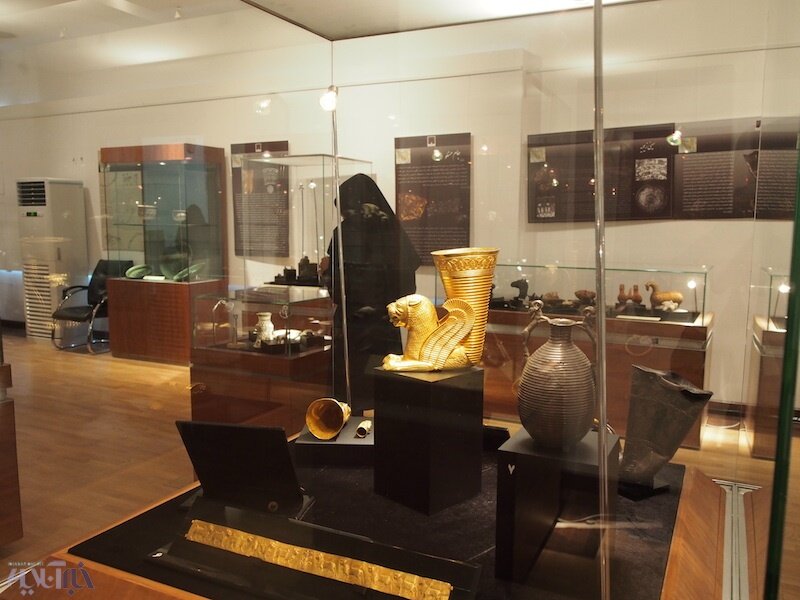Enhanced safety measures for Tehran museums

TEHRAN - The tourism ministry and Tehran Municipality have inked a cooperation agreement aimed at better protecting the historical heritage of the Iranian capital.
The agreement addresses the national importance of safeguarding valuable cultural and historical landmarks in Tehran, such as the Golestan Palace, Niavaran Complex, Sa’dabad Complex, and the National Museum of Iran, Mehr reported.
It underscores the necessity to elevate crisis management knowledge and fire safety levels at these cultural sites, as well as the Grand Bazaar of Tehran.
Key points include increasing the resilience of these valuable cultural and historical buildings against fires, improving safety measures at the Grand Bazaar, and facilitating the issuance of safety implementation permits.
Enhancing the skills and knowledge of staff at cultural sites, developing an operational plan for fire risk management and emergency response, creating a shared database and safety profiles, and connecting cultural and historical buildings to the fire alarm system of the Fire Department are among the pillars of the agreement.
By implementing these measures, the agreement seeks to provide a safer environment for the preservation and enjoyment of Tehran’s rich cultural history.
The enhanced safety protocols will help protect these irreplaceable sites from fire and other potential hazards, ensuring their legacy for future generations, the report said.
Tehran boasts a rich cultural heritage that reflects the grandeur of its historical epochs and the sophistication of Persian art and architecture. At the heart of this heritage lies the UNESCO-listed Golestan Palace, a stunning complex of royal buildings that dates back to the Qajar era. The palace is a masterpiece of Iranian architecture, adorned with exquisite tile work, mirror halls, and lush gardens. It was once the seat of Qajar rulers and continues to enchant visitors with its blend of Persian and European architectural styles, representing the artistic renaissance of the 19th century in Iran.
The Niavaran Complex, another significant cultural landmark, offers a glimpse into the opulent lifestyle of the Pahlavi dynasty. Located in the northern part of Tehran, this complex includes several palaces, each showcasing a unique blend of modernity and traditional Persian design. The main palace, Niavaran Palace, served as the residence of the last Shah of Iran, Mohammad Reza Pahlavi. Its lavish interiors, filled with art and artifacts from around the world, reflect the Shah’s taste for luxury and his efforts to modernize Iran.
Equally magnificent is the Sa’dabad Complex, which is situated in the foothills of the Alborz Mountains,. Sa’dabad was the summer residence of the Qajar and Pahlavi monarchs. The complex includes several museums and palaces, such as the White Palace and the Green Palace, each offering insights into the royal lifestyle and Iran’s modern history. The lush gardens and the tranquil environment provide a perfect backdrop for exploring Iran’s royal heritage.
The National Museum of Iran stands as the country’s premier museum, housing an extensive collection of artifacts that span the entirety of Iran’s rich history, from prehistoric times to the Islamic era. The museum’s two main buildings, the museum of ancient Iran and the museum of Islamic archaeology, offer a comprehensive overview of the nation’s cultural evolution. Visitors can marvel at ancient relics, including pottery, textiles, and manuscripts, each telling a story of Iran’s past civilizations and their contributions to world heritage.
No exploration of Tehran’s cultural heritage would be complete without a visit to the Grand Bazaar, a bustling marketplace that has been the commercial heart of the city for centuries. The bazaar is not only a place for trade but also a social and cultural hub, where the traditions of Persian craftsmanship are kept alive. Its labyrinthine alleys are lined with shops selling everything from spices and carpets to jewelry and antiques, providing a sensory feast for visitors and a tangible connection to Iran’s mercantile history.
AM
Leave a Comment